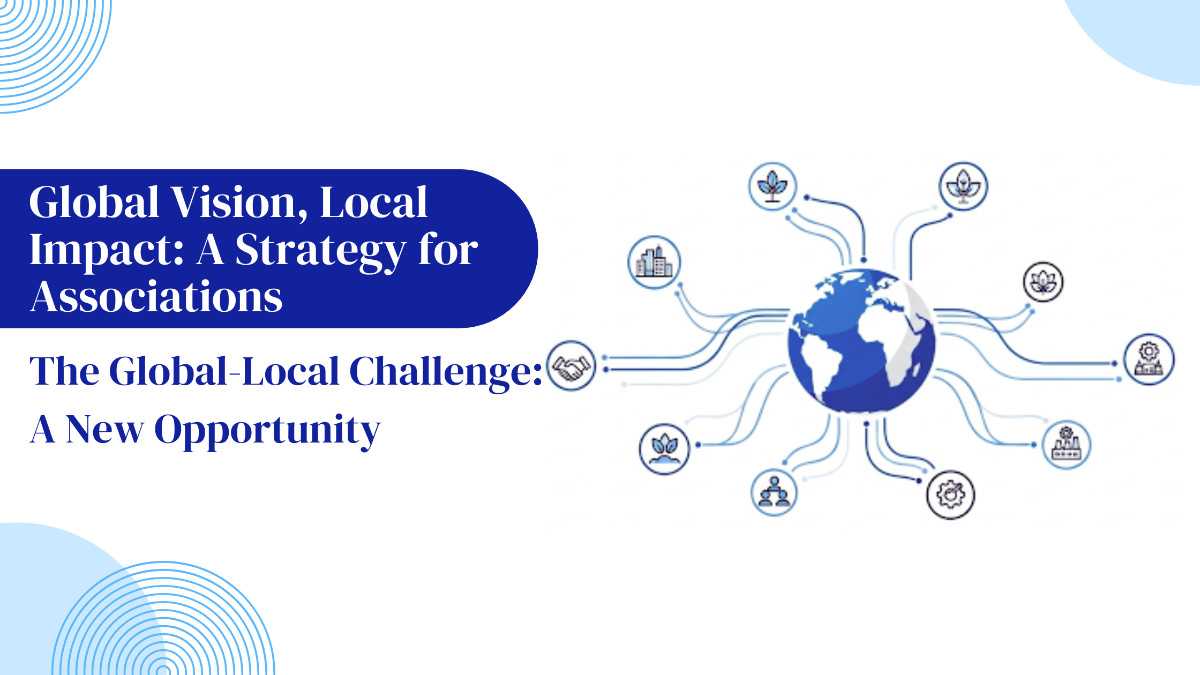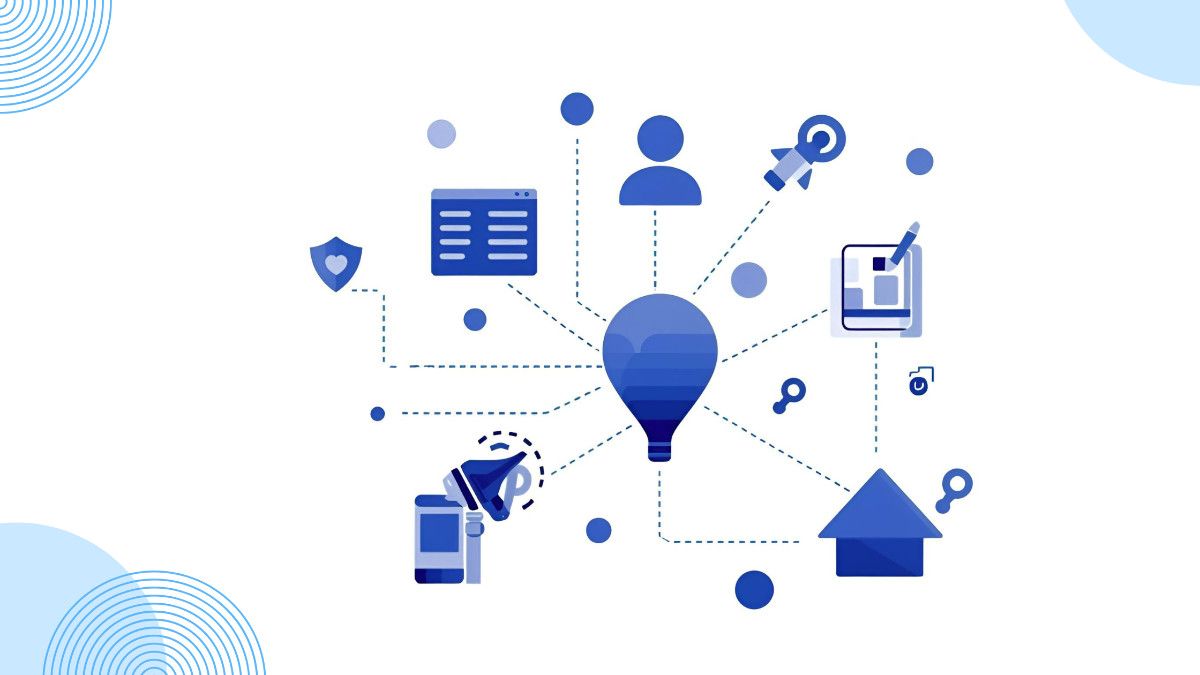Make Global Impact, Locally Driven—With an Association Software
Discover how association management software empowers global missions with local relevance. Scale smarter and lead across border.

In the world today, associations must walk a tightrope: go global and remain local. This glocalization—this dance between the global and the local—is at once a challenge and an opportunity for mission-driven organizations that seek to make a difference that lasts across borders.
In this article, we examine how associations can balance their international strategy with local implementation in order to fuel relevance, inclusion, and long-term resilience. By finding this balance, associations are not only able to increase their reach but also intensify their engagement with local communities.
To support this balance, many associations now turn to association management platforms. These platforms help centralize communication, coordinate global-local activities, and ensure consistency while respecting local autonomy.
According to The Business Research Company , the global association management software market is projected to grow at a compound annual growth rate (CAGR) of 14.1% between 2024 and 2029. This surge reflects the increasing adoption of tech-driven solutions that empower associations to operate more efficiently and engage their communities more effectively.
Why the Global-Local Balance Matters
Global missions—such as driving scientific progress, fighting global warming, or defending human rights—are important. But real impact is always local. Every community has its own economic, cultural, and environmental facts that need to be addressed for programs to reach in a real way.
The need for local adaptation:
- Cultural Relevance: Without local culture knowledge, even well-intentioned programs will fail.
- Economic Sensitivity: Lack of consideration for local economic conditions can create inefficiencies or harm.
- Environmental Factors: Policies that ignore local ecosystems can cause more harm than benefits.
Global alignment produces harmony, but local adaptation provides sustainability. Without balance, even the most well-designed plans can be defeated.
Principles of Locally Led Adaptation
Those were days of top-down, one-size-fits-all solutions. Today, we are interested in enabling communities to own, implement, and develop their own solutions. The World Resources Institute and Global Commission on Adaptation list the following guiding principles for effective local adaptation:
1. Decentralize Decision-Making
- Organizational enablement of local leaders to make program decisions in reality.
- Provide local communities with direct access to resources.
2. Combat Structural Inequalities
- Address issues like gender discrimination, caste-based discrimination, and economic inequality.
- Ensure equality at all stages of the program.
3. Promote Transparency and Accountability
- Local stakeholders ought to be able to hold organizations accountable not just for funding but also for outcomes.
- Make program outcomes available to everyone, not merely to donors.
4. Increase Cross-Sector Collaboration
- Align action with national policy, local culture, and environmental practice.
- Form partnerships in order to prevent duplication of efforts.
5. Emphasize Flexibility and Learning
- Adjust programs based on changing conditions.
- Leverage real-time feedback cycles to fuel innovation.
6. Invest in Local Capacity
- Build local capacity by providing training, mentorship, and access to technology.
- Organize communities to own and sustain their own solutions.
7. Provide Sustainable Financing
- Create financing models that are inclusive and flexible.
- Empower communities to control economic resources in a sustainable manner.
8. Enhance Local Risk Management
- Habituate communities with tools and knowledge for disaster and other risks management.
- Use indigenous and local knowledge to prepare effectively.
These values are driving a worldwide movement toward locally driven change.
From Global Strategies to Local Action
In a bid to close the gap between local action and global approaches, associations are tasked with embracing four transformational strategies:
1. Co-Creation with Communities
- Programs should be co-developed with populations and not imposed.
- Local expertise, culture, and experience are essential to guarantee ownership and applicability.
2. Flexible Governance and Financing
- Local stakeholders must be able to adapt as necessary.
- Rigid structures have a tendency to hinder responsiveness, therefore the governance structures must be accommodating.
- Association management platforms can support this flexibility by offering modular workflows, local team access, and region-specific settings.
3. Local Capacity Building
- Empower locals by mentoring and training capabilities.
- Ensure that the locals have the capacity to establish and maintain their own solutions in the long term.
4. Whole-of-Society Inclusion
- Form partnerships that involve business, governments, NGOs, and local organizations.
- When all the players in society are involved, then solutions are stronger and better.
Such approaches are crucial to realize global aspirations in concrete, lasting reality on the ground.
Examples of Real-Life Glocalization
Glocalization is being adopted by locals around the world. Here are a few examples:
Brazil – Empowering Indigenous Peoples
- Communities in Amazon are combining conventional agroforestry methods with emerging technologies to expand acai production.
- This provides economic empowerment while protecting vital ecosystems.
Cambodia – Empowering Women through Climate-Resilient Agriculture
- Cambodian women-run cooperatives have pioneered climate-resilient cricket farming—a green source of protein.
- This innovation represents the ideal mix of local demand and international reach.
Uganda – Embracing Sustainable Aquaponics
- Fish farm-aquaponics integration systems are enabling Ugandan farmers.
- Community-based systems are being scaled up to national levels to address food security.
India – A Glocal Innovation Nation
- Water Resilience: NGOs retooled old check dams with foreign climate funding.
- Women Entrepreneurship: Kerala’s Kudumbashree Mission promotes micro-enterprises based on cooperative values.
- Tribal Upliftment: Gujarat’s networks provide mobile-based training to bring tribal youths into urban job markets.
- Health Innovation: Local language telemedicine websites in the COVID-19 era filled the technology gap for rural healthcare needs.
India’s decentralized networks and linguistic diversity make it a best-practice model for grassroots innovation.
Digital Transformation: A Double-Edged Sword
Whereas with digital technology it is possible to bridge the gap between world goals and local needs, digital disparity has to be addressed. Association platforms also play a key role here—centralizing operations, enabling multilingual engagement, and integrating digital tools to connect global intentions with local actions.
Among the most powerful digital innovations that are making a difference are:
- Real-time dashboards to track progress
- Artificial Intelligence-driven content accessibility translating software
- Mobile wallets for more effective relief distribution
- Social media campaigns in local language for grassroot mobilization
But issues remain:
- Digital exclusion keeps most communities from accessing them.
- Investment must be made in digital literacy, data protection, and equal access.
Measuring What Matters Most
International efforts are missing what is most critical at the local level. Associations therefore increasingly employ Participatory Monitoring & Evaluation (PM&E) methods:
Examples of what is most important locally:
- In agriculture, soil fertility and water retention may be more significant than production.
- In native societies, cultural continuity or shared knowledge may be more important than economic factors.
By the application of qualitative as well as quantitative indicators, organizations possess a more comprehensive, accurate picture of their impacts.
From the Grassroots to Policy Change
If local innovations are to cross the globe, they must have an influence on policy. Associations are the most important bridging functions:
- Capturing good models and spreading them widely.
- Leaders in decentralized finance and policy making that empower local communities.
- Shaping global platforms such as COP and the SDGs with evidence from local communities.
With voices from the local community being heard on the global stage, policy making is inclusive and representative.
Current Challenges
Despite improvement, the global-local model still has to contend with:
- Power disparities: Donor and head office decision-making.
- Tokenism: The people are consulted but not empowered.
- Resource misalignment: Budget cycles do not match community realities.
- Cultural disconnections: Foreign employees can be out of touch with local conventions, leading to miscommunication.
These are issues that only respond to humility, cooperation, and willingness to change.
The Future Opportunity
The global-local model promises a great deal:
- Locally driven solutions are less costly and sustainable.
- Global youth climate and tech movements are sweeping the world.
- Global summits are more and more centered on community perspectives.
Those organizations embracing this glocal mindset will not only succeed—they will chart the path for development’s future.A thoughtfully implemented association management platform can serve as the backbone of this glocal mindset—empowering teams across geographies to collaborate, adapt, and thrive.
The Glocal Path Forward
To succeed in a global-and-local world, associations must:
- Think globally, but act locally.
- Use world models as templates, not rigid blueprints.
- Enable mutual learning, not extraction.
- Build inclusive, iterative partnerships.
In Conclusion
As Michelle Du Toit wisely points out, authentic partnership with communities means going beyond simply labeling initiatives as “locally led.”
True impact comes from working hand-in-hand with communities, ensuring their voices and leadership are at the heart of every decision.
If your association is committed to this deeper level of collaboration, our platform is here to help you put these principles into practice. With tools designed to empower local decision-makers, foster real-time collaboration, and engage all stakeholders, we enable you to build the kind of inclusive, sustainable networks that Michelle advocates for.
Let’s move from intention to action—together, we can create lasting change by growing with communities, not just in them.
Suggested Blogs
Let’s discuss the idea
Join hundreds of companies transforming their corporate communities with Almashines






